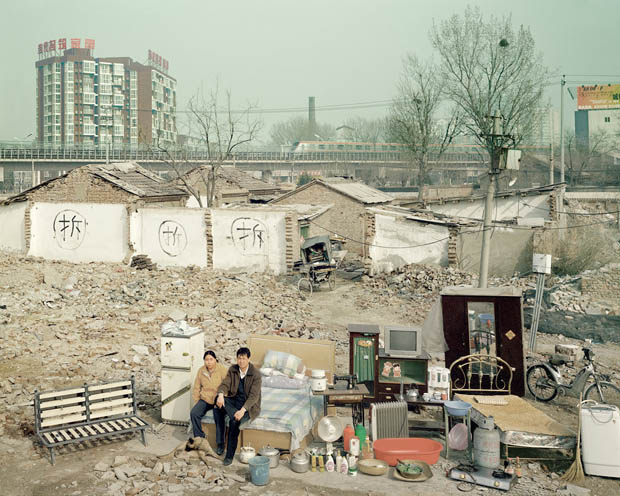Huang Qingjun has spent nearly a decade traveling to remote parts of China to persuade people who have sometimes never been photographed to carry outside all their household possessions and pose for him.
Huang says, “In lots of Chinese villages, the government has delivered roads and connected them with electricity. This has been a huge change. If you’ve a road, you can move about. If you’ve got electricity you can have TV, you get the news and ideas about what the outside world is thinking.
The biggest problems in rural areas now are how people can get better education for their children, and healthcare.”
Most families have already acquired a TV, a few have washing machines. The pedal-driven sewing machine which in their parents’ generation was every housewife’s dream – known as one of the “four big things” – is pushed to the back of a few pictures.
Four Big Things
- Phrase dating from 1950s for most sought-after goods for newly married couples: sewing machine, bicycle, watch, radio
- It’s since come to refer to whatever is most fashionable at the time
- By 1980s the four big things were: TV, washing machine, rice cooker, fridge
- Now consumer goods flood China’s cities, it tends to be used to describe people’s aspirations for the latest thing
Chinese spending habits
- The government has tried in recent years to boost consumer spending with discount vouchers on appliances, furniture and cars
- Many aspire to material goods, but a 2010 survey found they were more concerned with saving for education, healthcare and retirement
Next year marks the 10th anniversary of the first photograph, and Huang plans to mark it by returning to the places he visited – or those that are still recognizable – to see what has changed.
“In the last 10 years, China has seen such a fast rate of growth, I want to go back and see what the effects have been on their lives,” he says.
Source: BBC
Photos: Huang Qingjun








Talk to me, Goose.